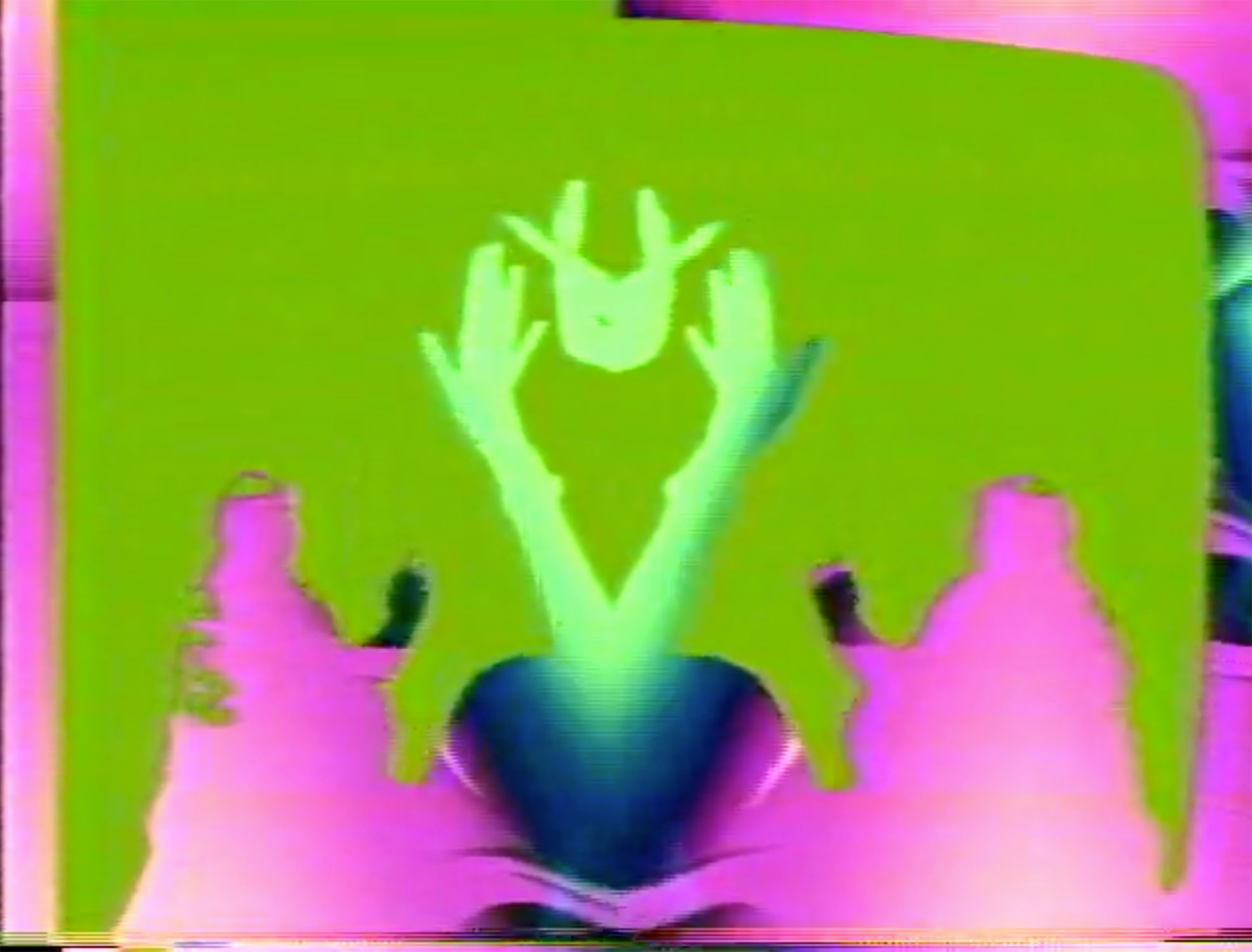Thursday, February 09, 6:00 p.m.

“When I think of computer art I think of Chicago.” – Gene Youngblood, Send Magazine, 1983
In the 1970s and 80s, Chicago was home to a community of video artists and engineers—many of them women—whose groundbreaking experiments with analogue and digital computers produced a body of astonishingly rich and influential work. This program brings together videos by four of these innovators, including Jamie Fenton, Copper Giloth, Barbara Sykes (MFA 1981), and Jane Veeder (MFA 1977). Introduced and moderated by scholar Helena Shaskevich, the program will be followed by a conversation with Fenton, Giloth, and Veeder, who will discuss the ideas, technologies, and community that influenced their works.
Presented in partnership with Media Burn Archive and Video Data Bank. Electric Visions is part of Art Design Chicago, a citywide collaboration initiated by the Terra Foundation for American Art that aims to expand understandings of Chicago’s creative communities, past and present. Funded by the Terra Foundation for American Art.
1975-85, multiple artists, United States, ca 60 minutes plus discussion
Format: Various formats on digital video and live demonstration
In English
_
PROGRAM
CIRCLE 9 SUNRISE, Barbara Sykes, Tom DeFanti, and Drew Browning 1976, ca 9 min
[ZGrass Demo], Phil Morton, Tom DeFanti, and Dan Sandin, 1976, ca 8 min
A MOVEMENT WITHIN, Barbara Sykes, 1976 ca 8 min
“Moon,” excerpted from PROGRAM 9: AMATEUR TV, Phil Morton and Jane Veeder, 1979, ca 2 min
MONTANA, Jane Veeder, 1982, 3 min
BALLYOID CARDIODS, Copper Giloth, 1979, 3 min
SKIPPY PEANUT BUTTER JARS, Copper Giloth, 1980, 3 min
RIP [Sequence 1], Jamie Fenton, 1979, ca 2 min
RIP [Sequence 4], Jamie Fenton, and Dick Ainsworth, 1979, ca 2 min
“From Video Games to Video Art,” Copper Giloth Interview with Bob Sirott, CBS News, 1980, ca 1 min
WARP IT OUT DEMO, Jane Veeder, 1982, ca 5 min
DIGITAL TV DINNER, Jamie Fenton, Raul Zaritsky, and Dick Ainsworth, 1979, ca 3 min
__
ABOUT THE ARTISTS
Jamie Fenton is an artist, game designer, and engineer whose 1978 DIGITAL TV DINNER (with Raul Zaritsky and Dick Ainsworth) is thought to be one of the earliest examples of contemporary glitch art. She was part of the team that designed and developed the pivotal Bally Astrocade home computer and game system in the mid-1970s. In 1978, she created one of the earliest graphics programming languages, BASIC Zgrass, with Tom DeFanti and Nola Donato. Fenton also designed the 1981 science fiction arcade game GORF during her time as artist and programmer for Chicago-based Midway Manufacturing. In 1985, she developed the software that would become MacroMind Director (later Macromedia Director, and then Adobe Director). She has continued to produce new media and glitch art while working with some of the most influential tech companies today, including Apple, Amazon, and TiVO, among others.
Copper Giloth is an award-winning digital media artist whose work has been featured in international festivals, galleries, and museums, including the Museum of Modern Art, the National Academy of Sciences, and ACM SIGGRAPH. In 1980, Giloth became the first master of fine arts candidate and woman to graduate from the Electronic Visualization Laboratory at the University of Illinois at Chicago. In 1982, Giloth chaired the first ACM SIGGRAPH juried public exhibition of experimental two-dimensional, three-dimensional interactive, and time-based works by artists and scientists. In 1985, Giloth and Jane Veeder co-authored ”The Paint Problem,” an influential essay on issues around the future of artists’ digital tools. Giloth is professor emeritus of art at the University of Massachusetts Amherst, where she also served as director of academic computing in the Office of Information Technologies for 21 years.
Barbara Sykes is a pioneering Chicago video artist whose individual and collaborative works have been shown extensively worldwide, including at the Museum of Modern Art, Art Institute of Chicago, Kunstmuseum Bonn, and Musée d’Art Moderne de Paris, among others. Her work is emblematic of the cross-pollination between analogue and digital computing fostered by Chicago’s video art community. Sykes studied with the artist and engineer Dan Sandin at the University of Illinois at Chicago and performed with Tom deFanti at the legendary EVE 1 and EVE 2 Electronic Visualization Events in 1975 and 1976, which featured some of the first ever real-time computer performances. She received a master of fine arts from the School of the Art Institute of Chicago and served as professor of Television at Columbia College from 1982-2005.
Jane Veeder is a video and digital media artist whose works have been shown internationally and are in the permanent collection of the Museum of Modern Art. She began working with electronic media in 1976, collaborating with the artist Phil Morton on a series of videos while studying at the School of the Art Institute of Chicago. During the late 1970s and early 1980s, Veeder worked for Real Time Design, an early Chicago digital start up, and experimented with video game systems and personal computers in the creation of her artworks, using both the Bally Arcade System and the Datamax UV-1. For most of her career, she produced her own animated and interactive computer works while designing graphical interfaces for software applications and interactive entertainment. She served as professor of Design and Industry at San Francisco State University from 1988-2017.
Helena Shaskevich is a doctor of philosophy candidate in art history at the Graduate Center, City University ofNew York, where she is writing a dissertation on 1970s feminist video art and political activism. She is currently a fellow at the Graduate Center’s New Media Lab. Her writing has been published in Feminist Media Histories, Panorama: Journal of the Association of Historians of American Art, Art Journal, and Camera Obscura.